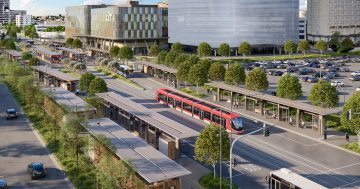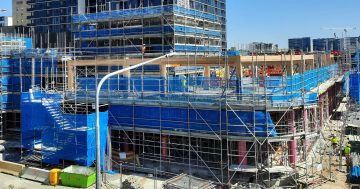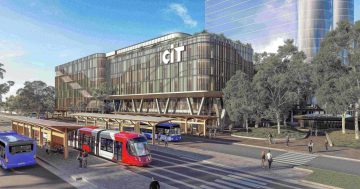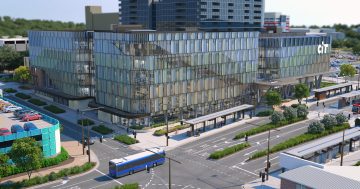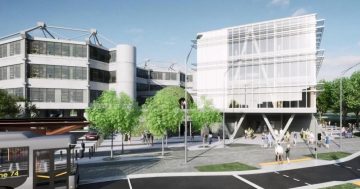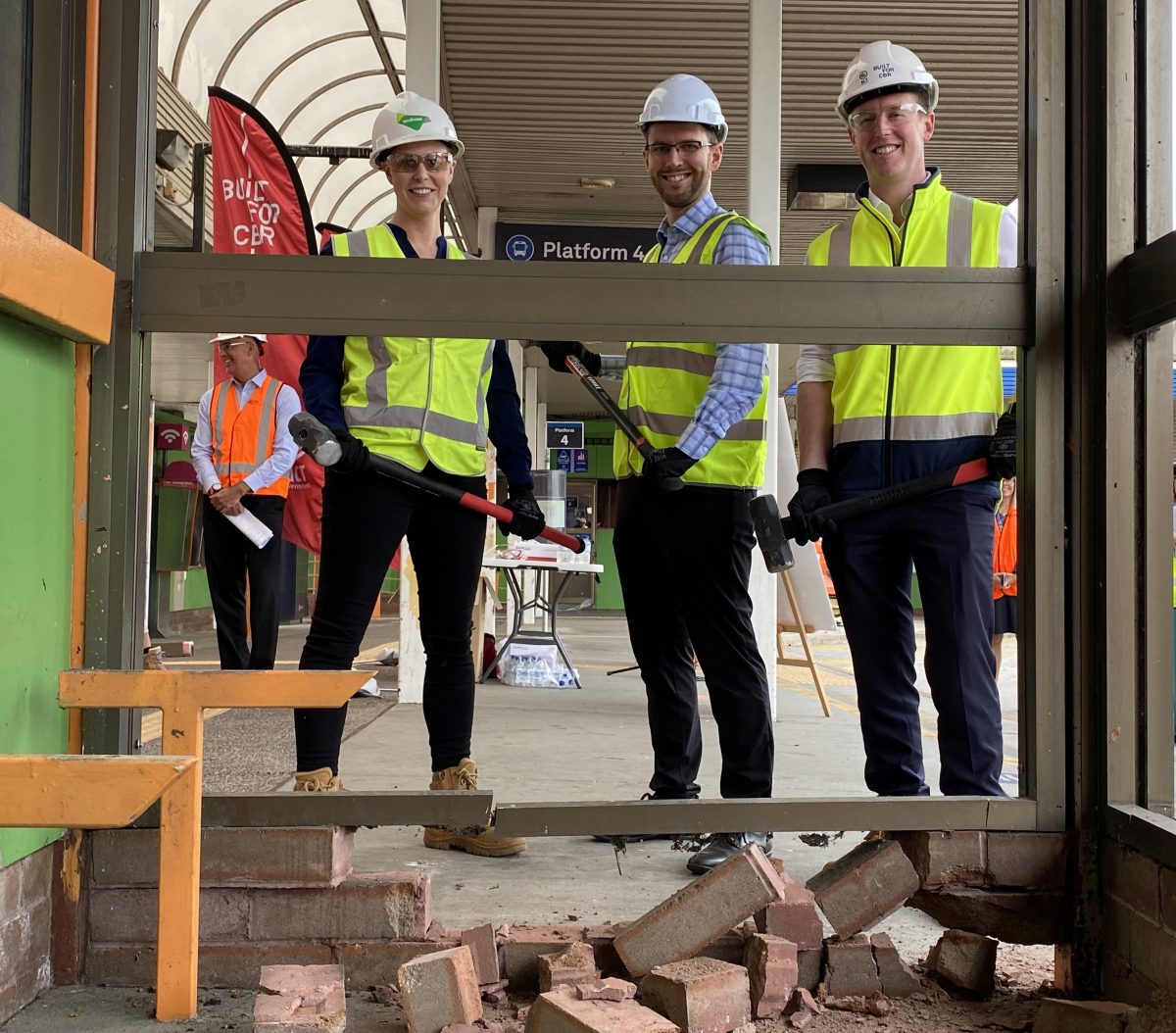
LendLease project director Elyse Howard, PTA Canberra chair Ryan Hemsley and Transport Minister Chris Steel all took a sledgehammer to the old Woden bus interchange. Photo: Claire Fenwicke.
After 50 years of service, it’s the last stop for the old Woden bus interchange, with demolition work beginning to make way for the future.
A new CIT campus and light-rail-ready interchange will take its place as the government aims to make Woden the “major destination hub” on the southside.
“This is the end of an era for Woden but also the beginning of a substantial renewal of the town centre,” Transport Minister Chris Steel said.
“This interchange has served Woden well, but the reality is it does feel unsafe, it is quite dark and cold at times, and I think most of the community will be very happy to see it go.
“The significance of the works occurring today cannot be overstated, with these projects representing the biggest infrastructure investments in the Woden Town Centre in more than 50 years.”
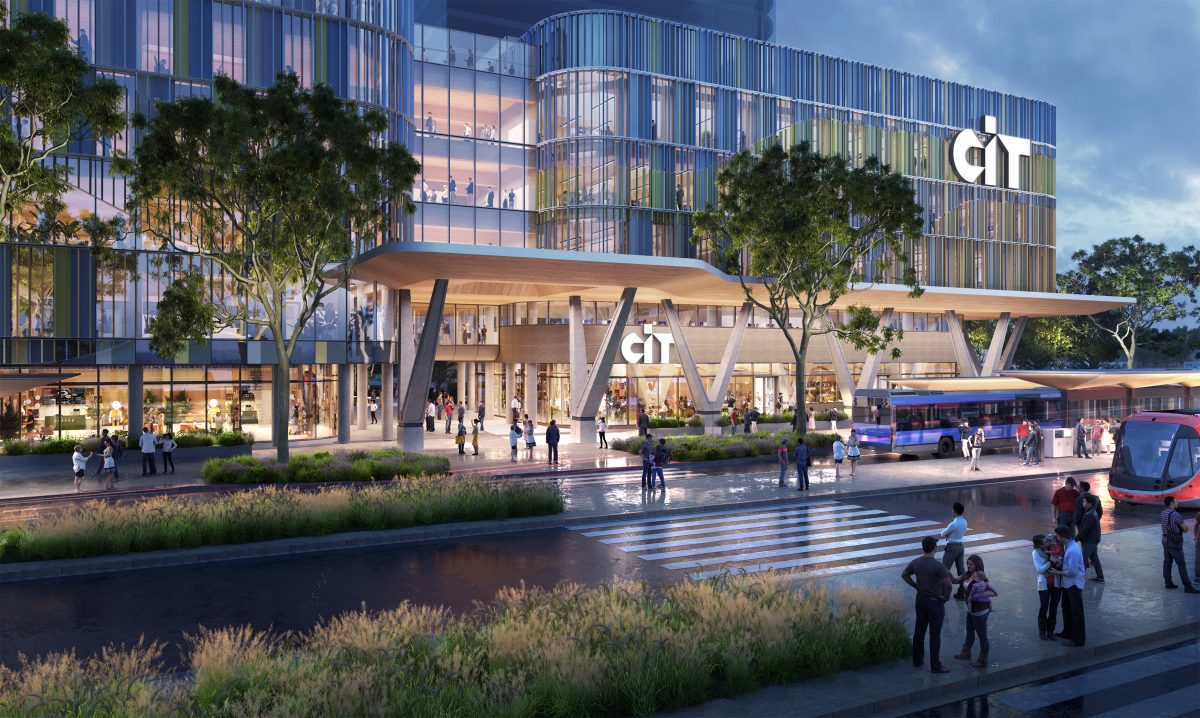
Artist’s impression of the new CIT campus as viewed from Callam St. Photo: Supplied, ACT Government.
Demolition is expected to take until April, with construction to begin on the CIT campus shortly after. However, these development applications are still being assessed.
Mr Steel said locals should expect disruptions from the upgrades for the next few years.
“There will be a period of disruption in Woden town centre for a couple of years while this work happens, but it will be with the long-term view of renewing this town centre as a great place to live, to work and also to study and shop,” he said.
Canberrans can expect to see a lot of activity at the construction site over the coming months, including increased truck movements, along with the arrival and movement of plant and excavation equipment, and the demolition of existing structures and pavements.
The old Woden bus interchange was opened on 4 December 1972, and 683 buses pass through its 11 platforms daily.

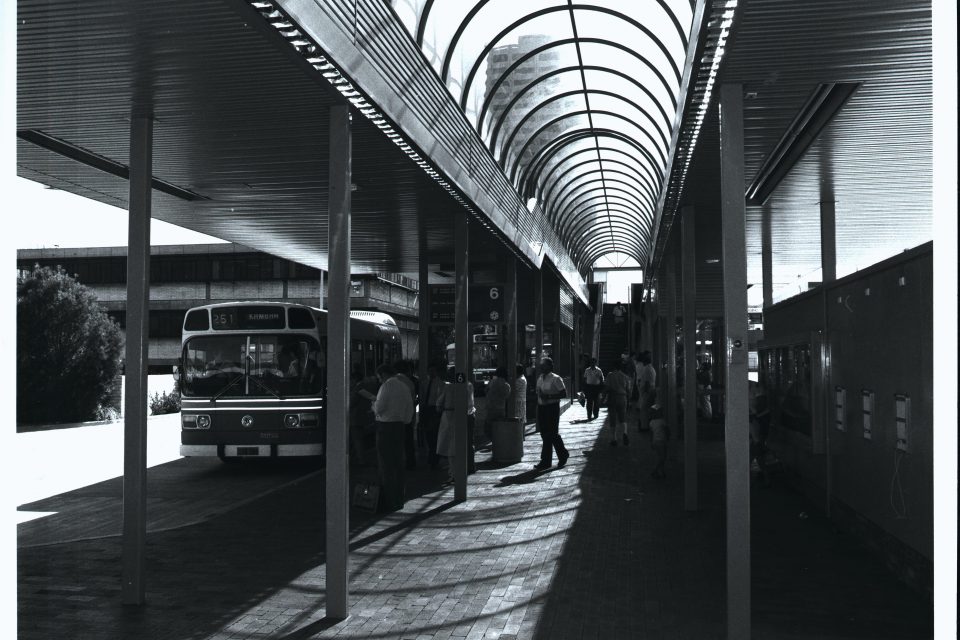
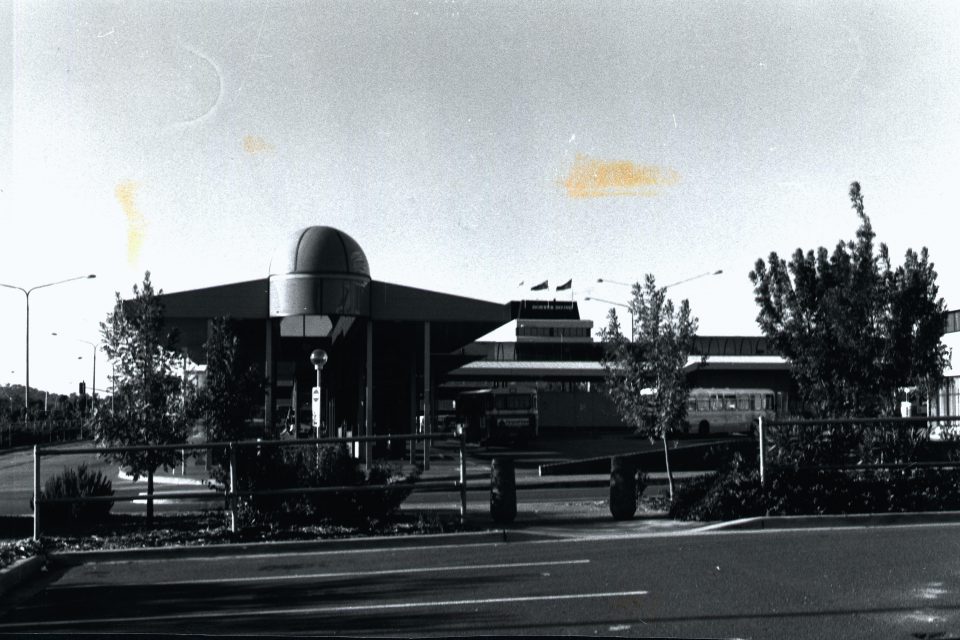
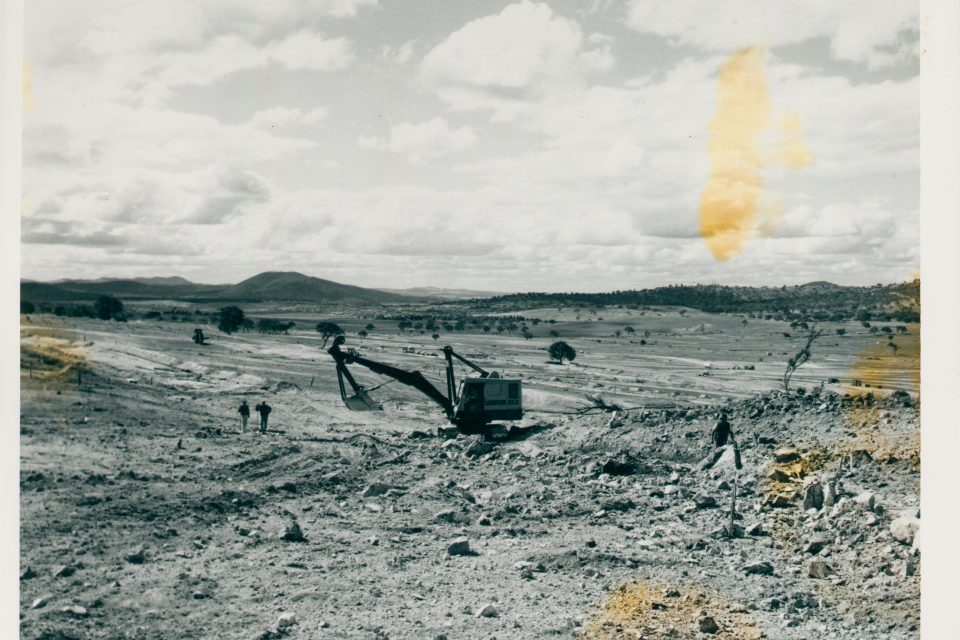
For Public Transport Association of Canberra chair Ryan Hemsley, demolition day was a moment he’s been waiting a long time to arrive.
“The best time to demolish this facility was 20 years ago. The second best time is today,” he said.
Services have already ceased at the site, with route 59 being the last bus to leave the interchange on 29 January.
The temporary exchange opened last month.
Improvements have been made to the design, with public toilets added and shelter for people walking through the CIT campus from the buses to the shopping centre.
Minister Steel said changes were also being made to the bus shelters themselves.
“We’re using many of the design elements from those really great light rail stops … but also incorporating some of the same elements [from bus shelters that] have worked really well on the city’s north side,” he said.
There will also be secure bike storage and lockup, a pedestrian boulevard to Woden town square, a new Bowes and Bradley St local shared zone and new green spaces and trees.

Artist’s impression of the elevated boulevard. Photo: Supplied, ACT Government.
A Youth Foyer will be delivered within the campus, providing accommodation, support services and chances for vulnerable young people to pursue education and training in the one place.
The interchange will also have improved lighting and signage, with technology to support future electric buses and light rail.
Greens MLA Jo Clay pointed out in the Legislative Assembly that Canberra’s bus fleet was smaller now than it was two decades ago.
However, Minister Steel argued the new interchange was being built with both buses and other public transport options in mind.
“Each of those light rail vehicles carries around four times the number that can fit on a bus,” he said.
“What’s happened over time is that our buses themselves have increased in capacity; they’re much larger than they were two or three decades ago.”
The site will have the capacity for an extra 100 buses in the future.
The CIT campus precinct is expected to welcome its first students in 2025.












